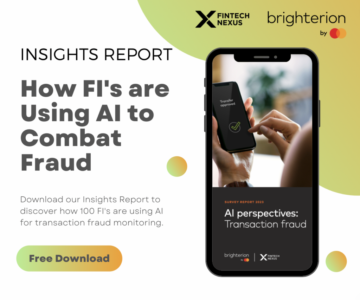In today’s digital age, global interest in chargebacks has surged due to the exponential growth of online commerce. Cardholders are increasingly aware of their rights and are quick to initiate chargebacks in cases of dissatisfaction or suspicion of fraud. As consumers grow savvier, banks and financial firms face complex challenges when addressing their rights.
As mentioned, we see a growing trend in the soaring popularity of chargebacks. This mechanism allows credit card users to dispute charges on their accounts and get refunded on their transactions for goods and services that didn’t meet their expectations or weren’t received.
Chargeback chaos – 2 in 5 Undisputed by Merchants
A report from Mastercard shows that chargeback volumes will reach 337 million by 2026, a staggering 42% increase from 2023. According to data from Justt, three-in-four Americans and Brits filed a chargeback last year and more than three-quarters of chargeback managers reported seeing as many or more chargebacks compared to 2022. Due to the complex nature of the dispute resolution process, nearly 60% of merchants are leaving at least two-in-five chargebacks undisputed, leading to profit losses.
Chargebacks and Challenges for Banks
Unsurprisingly, the cost of settling these transaction disputes is huge, costing the payments industry billions in revenue. The burden of these costs, which will continue to rise each year, is split between banks and merchants. Yet the burden of debt recovery is often carried by the banks.
Here’s why.
Typically, if there’s an issue with a purchase, the cardholder will first try to fix the problem directly with the merchant. If the merchant does not agree to refund or resolve the issue, the cardholder can then initiate a chargeback request with their bank, which will look into and possibly reverse the transaction.
This process is supported by the rules of major credit card networks like Visa and Mastercard. The customer’s bank will request the funds from the merchant’s bank, not the merchant directly. Therefore, the funds can still be recovered even if the merchant has gone out of business.
The Financial Impact and Strategic Response
With the rise of chargeback requests, banks now find themselves at a crossroads, tasked with the challenge of streamlining processes and operational costs while steadfastly safeguarding consumer rights. On a more positive note, the rise in consumer awareness also provides a unique opportunity to refine their chargeback processes. By enhancing their systems and moving away from manual procedures – which require a lot of resources and money, banks can improve customer loyalty and bolster the appeal of card payments.
An effective response to these challenges requires a multifaceted approach:
#1 Education and Awareness
Banks should invest in educating both merchants and consumers about the chargeback process to reduce the number of chargeback requests that come through. For merchants, this would include guidance on personalizing the customer experience, such as live, round-the-clock service, offering free no-questions-asked return policies, and ensuring accurate descriptions for goods and services. For consumers, education efforts would focus on when a chargeback is appropriate and the consequences of fraudulent disputes.
#2 Improved Fraud Detection
Financial institutions must continue to enhance their fraud detection capabilities. This includes leveraging artificial intelligence and machine learning to identify patterns indicative of chargeback fraud. Fortunately, cutting-edge fintech technology is available that can help financial institutions manage fraud detection more effectively and improve their operational efficiencies.
#3 Streamlined Dispute Resolution
Simplifying the dispute resolution process can benefit all parties involved. For consumers, a more straightforward process reduces frustration and builds trust. For merchants, a more efficient system means quicker resolutions and less time spent contesting chargebacks. At the moment, most banks have outdated software in place to manage this process; it’s still manual and people-driven. The rapid growth in card payments (and therefore also disputes and rule updates) is fuelling demand for a digital compliance solution that can help banks save money and keep customers loyal.
#4 Collaboration with Merchants
Banks should work closely with merchants to share data and insights related to chargeback fraud. This collaboration can help identify common vulnerabilities and develop industry-wide strategies to combat fraudulent disputes.
#5 Policy Reforms
Financial institutions may need to reconsider their policies around chargebacks. This could involve stricter guidelines for initiating a dispute and enhanced verification processes to confirm the legitimacy of a claim.
As the popularity of digital payments increases globally, consumer-initiated chargebacks will also continue to grow as more people become aware of their financial protection rights. Banks are now urged to be more alert and proactive in handling these increases to protect both their operations and their customers in an e-commerce environment.
Managing chargebacks requires investment in technology and the involvement and collaboration of all parties and stakeholders within the payment ecosystem. By putting strong preventative strategies in place, banks and financial institutions can lessen their vulnerability, enhance their services and create a more secure space for the digital age. Achieving this will not only boost customer satisfaction but also strengthen consumer confidence in digital payment platforms.
.pp-multiple-authors-boxes-wrapper.box-post-id-45383.pp-multiple-authors-layout-boxed.multiple-authors-target-shortcode.box-instance-id-1 .box-header-title { font-size: 20px !important; } .pp-multiple-authors-boxes-wrapper.box-post-id-45383.pp-multiple-authors-layout-boxed.multiple-authors-target-shortcode.box-instance-id-1 .box-header-title { font-weight: bold !important; } .pp-multiple-authors-boxes-wrapper.box-post-id-45383.pp-multiple-authors-layout-boxed.multiple-authors-target-shortcode.box-instance-id-1 .box-header-title { color: #000000 !important; } .pp-multiple-authors-boxes-wrapper.box-post-id-45383.pp-multiple-authors-layout-boxed.multiple-authors-target-shortcode.box-instance-id-1 .pp-author-boxes-avatar img { border-style: none !important; } .pp-multiple-authors-boxes-wrapper.box-post-id-45383.pp-multiple-authors-layout-boxed.multiple-authors-target-shortcode.box-instance-id-1 .pp-author-boxes-avatar img { border-radius: 5% !important; } .pp-multiple-authors-boxes-wrapper.box-post-id-45383.pp-multiple-authors-layout-boxed.multiple-authors-target-shortcode.box-instance-id-1 .pp-author-boxes-name a { font-size: 24px !important; } .pp-multiple-authors-boxes-wrapper.box-post-id-45383.pp-multiple-authors-layout-boxed.multiple-authors-target-shortcode.box-instance-id-1 .pp-author-boxes-name a { font-weight: bold !important; } .pp-multiple-authors-boxes-wrapper.box-post-id-45383.pp-multiple-authors-layout-boxed.multiple-authors-target-shortcode.box-instance-id-1 .pp-author-boxes-name a { color: #000000 !important; } .pp-multiple-authors-boxes-wrapper.box-post-id-45383.pp-multiple-authors-layout-boxed.multiple-authors-target-shortcode.box-instance-id-1 .pp-author-boxes-description { font-style: none !important; } .pp-multiple-authors-boxes-wrapper.box-post-id-45383.pp-multiple-authors-layout-boxed.multiple-authors-target-shortcode.box-instance-id-1 .pp-author-boxes-description { text-align: left !important; } .pp-multiple-authors-boxes-wrapper.box-post-id-45383.pp-multiple-authors-layout-boxed.multiple-authors-target-shortcode.box-instance-id-1 .pp-author-boxes-meta a span { font-size: 20px !important; } .pp-multiple-authors-boxes-wrapper.box-post-id-45383.pp-multiple-authors-layout-boxed.multiple-authors-target-shortcode.box-instance-id-1 .pp-author-boxes-meta a span { font-weight: normal !important; } .pp-multiple-authors-boxes-wrapper.box-post-id-45383.pp-multiple-authors-layout-boxed.multiple-authors-target-shortcode.box-instance-id-1 .pp-author-boxes-meta { text-align: left !important; } .pp-multiple-authors-boxes-wrapper.box-post-id-45383.pp-multiple-authors-layout-boxed.multiple-authors-target-shortcode.box-instance-id-1 .pp-author-boxes-meta a { background-color: #6adc21 !important; } .pp-multiple-authors-boxes-wrapper.box-post-id-45383.pp-multiple-authors-layout-boxed.multiple-authors-target-shortcode.box-instance-id-1 .pp-author-boxes-meta a { color: #ffffff !important; } .pp-multiple-authors-boxes-wrapper.box-post-id-45383.pp-multiple-authors-layout-boxed.multiple-authors-target-shortcode.box-instance-id-1 .pp-author-boxes-meta a:hover { color: #ffffff !important; } .pp-multiple-authors-boxes-wrapper.box-post-id-45383.pp-multiple-authors-layout-boxed.multiple-authors-target-shortcode.box-instance-id-1 .ppma-author-user_url-profile-data { color: #6adc21 !important; } .pp-multiple-authors-boxes-wrapper.box-post-id-45383.pp-multiple-authors-layout-boxed.multiple-authors-target-shortcode.box-instance-id-1 .ppma-author-twitter-profile-data span, .pp-multiple-authors-boxes-wrapper.box-post-id-45383.pp-multiple-authors-layout-boxed.multiple-authors-target-shortcode.box-instance-id-1 .ppma-author-twitter-profile-data i { font-size: 16px !important; } .pp-multiple-authors-boxes-wrapper.box-post-id-45383.pp-multiple-authors-layout-boxed.multiple-authors-target-shortcode.box-instance-id-1 .ppma-author-twitter-profile-data { background-color: #6adc21 !important; } .pp-multiple-authors-boxes-wrapper.box-post-id-45383.pp-multiple-authors-layout-boxed.multiple-authors-target-shortcode.box-instance-id-1 .ppma-author-twitter-profile-data { border-radius: 50% !important; } .pp-multiple-authors-boxes-wrapper.box-post-id-45383.pp-multiple-authors-layout-boxed.multiple-authors-target-shortcode.box-instance-id-1 .ppma-author-twitter-profile-data { text-align: center !important; } .pp-multiple-authors-boxes-wrapper.box-post-id-45383.pp-multiple-authors-layout-boxed.multiple-authors-target-shortcode.box-instance-id-1 .ppma-author-linkedin-profile-data span, .pp-multiple-authors-boxes-wrapper.box-post-id-45383.pp-multiple-authors-layout-boxed.multiple-authors-target-shortcode.box-instance-id-1 .ppma-author-linkedin-profile-data i { font-size: 16px !important; } .pp-multiple-authors-boxes-wrapper.box-post-id-45383.pp-multiple-authors-layout-boxed.multiple-authors-target-shortcode.box-instance-id-1 .ppma-author-linkedin-profile-data { background-color: #6adc21 !important; } .pp-multiple-authors-boxes-wrapper.box-post-id-45383.pp-multiple-authors-layout-boxed.multiple-authors-target-shortcode.box-instance-id-1 .ppma-author-linkedin-profile-data { border-radius: 50% !important; } .pp-multiple-authors-boxes-wrapper.box-post-id-45383.pp-multiple-authors-layout-boxed.multiple-authors-target-shortcode.box-instance-id-1 .pp-author-boxes-recent-posts-title { border-bottom-style: dotted !important; } .pp-multiple-authors-boxes-wrapper.box-post-id-45383.pp-multiple-authors-layout-boxed.multiple-authors-target-shortcode.box-instance-id-1 .pp-multiple-authors-boxes-li { border-style: solid !important; } .pp-multiple-authors-boxes-wrapper.box-post-id-45383.pp-multiple-authors-layout-boxed.multiple-authors-target-shortcode.box-instance-id-1 .pp-multiple-authors-boxes-li { color: #3c434a !important; }
- SEO Powered Content & PR Distribution. Get Amplified Today.
- PlatoData.Network Vertical Generative Ai. Empower Yourself. Access Here.
- PlatoAiStream. Web3 Intelligence. Knowledge Amplified. Access Here.
- PlatoESG. Carbon, CleanTech, Energy, Environment, Solar, Waste Management. Access Here.
- PlatoHealth. Biotech and Clinical Trials Intelligence. Access Here.
- Source: https://www.fintechnexus.com/rise-chargeback-awareness-impact-on-banks/
- :has
- :is
- :not
- 1
- 2%
- 2023
- 5
- a
- About
- According
- Accounts
- accurate
- achieving
- acquiring
- addressing
- age
- agree
- Alert
- All
- allows
- also
- Americans
- an
- and
- appeal
- approach
- appropriate
- ARE
- around
- artificial
- artificial intelligence
- Artificial Intelligence and Machine Learning
- AS
- At
- available
- avatar
- aware
- awareness
- away
- Bank
- Banks
- based
- BE
- become
- benefit
- between
- bold
- bolster
- boost
- both
- builds
- burden
- business
- but
- by
- CAN
- capabilities
- card
- card payments
- cardholders
- carried
- cases
- Center
- challenge
- challenges
- Chaos
- charges
- claim
- closely
- Co-founder
- code
- collaboration
- color
- combat
- come
- Commerce
- Common
- compared
- complex
- compliance
- confidence
- Confirm
- Consequences
- consumer
- Consumer Rights
- Consumers
- continue
- Cost
- Costs
- could
- create
- credit
- credit card
- Crossroads
- Current
- customer
- customer experience
- Customer Loyalty
- Customer satisfaction
- Customers
- cutting-edge
- data
- Debt
- Demand
- Detection
- develop
- digital
- digital age
- Digital Payment
- Digital Payments
- digitally
- directly
- Dispute
- Dispute Resolution
- disputes
- does
- dr
- due
- e-commerce
- each
- ecosystem
- educating
- Education
- Effective
- effectively
- efficiencies
- efficient
- efforts
- end-to-end
- enhance
- enhanced
- enhancing
- ensuring
- Environment
- Even
- expectations
- experience
- exponential
- Exponential Growth
- Face
- filed
- financial
- Financial institutions
- Financial Protection
- Find
- fintech
- firms
- First
- Fix
- Focus
- For
- For Consumers
- Fortunately
- fraud
- fraud detection
- fraudulent
- Free
- from
- frustration
- funds
- get
- Global
- global interest
- Globally
- gone
- goods
- Grow
- Growing
- Growth
- guidance
- guidelines
- Handling
- Have
- help
- hover
- HTTPS
- huge
- i
- identify
- if
- Impact
- improve
- improved
- in
- include
- includes
- Increases
- increasingly
- indicative
- industry
- initiate
- initiating
- insights
- institutions
- Intelligence
- interest
- into
- Invest
- investment
- involve
- involved
- involvement
- issue
- issuing
- ITS
- jpg
- Keep
- Last
- Last Year
- leading
- learning
- least
- leaving
- left
- legitimacy
- less
- leveraging
- like
- live
- Look
- losses
- Lot
- loyal
- Loyalty
- machine
- machine learning
- major
- manage
- Managers
- manual
- many
- mastercard
- May..
- means
- mechanism
- Meet
- mentioned
- Merchant
- Merchants
- million
- moment
- money
- more
- more efficient
- most
- moving
- multifaceted
- must
- Nature
- navigating
- nearly
- Need
- networks
- None
- normal
- note
- now
- number
- obligations
- of
- offering
- often
- on
- online
- only
- operational
- Operations
- Opportunity
- or
- out
- outdated
- parties
- patterns
- payment
- payment networks
- payments
- payments industry
- People
- Place
- Platforms
- plato
- Plato Data Intelligence
- PlatoData
- players
- policies
- popularity
- positive
- possibly
- Proactive
- Problem
- procedures
- process
- processes
- Profit
- protect
- protection
- provides
- purchase
- Putting
- Quick
- quicker
- rapid
- reach
- received
- reconsider
- recovery
- reduce
- reduces
- refine
- refund
- related
- report
- request
- requests
- require
- requires
- Resolution
- resolve
- Resources
- response
- return
- reverse
- rights
- Rise
- Rule
- rules
- SaaS
- safeguarding
- satisfaction
- Save
- secure
- see
- seeing
- service
- Services
- settling
- Share
- should
- Shows
- simplifies
- simplifying
- soaring
- Software
- solid
- solution
- Solutions
- Space
- span
- spent
- split
- staggering
- stakeholders
- Still
- straightforward
- Strategic
- strategies
- streamlined
- streamlining
- Strengthen
- stricter
- strong
- such
- Supported
- Surged
- switzerland
- system
- Systems
- tasked
- Technology
- than
- that
- The
- their
- themselves
- then
- therefore
- These
- this
- Through
- time
- to
- today’s
- transaction
- Transactions
- Trend
- Trust
- try
- unique
- upcoming
- Updates
- urged
- users
- Verification
- visa
- volumes
- Vulnerabilities
- vulnerability
- we
- when
- which
- while
- why
- will
- with
- within
- Work
- would
- year
- yet
- zephyrnet








